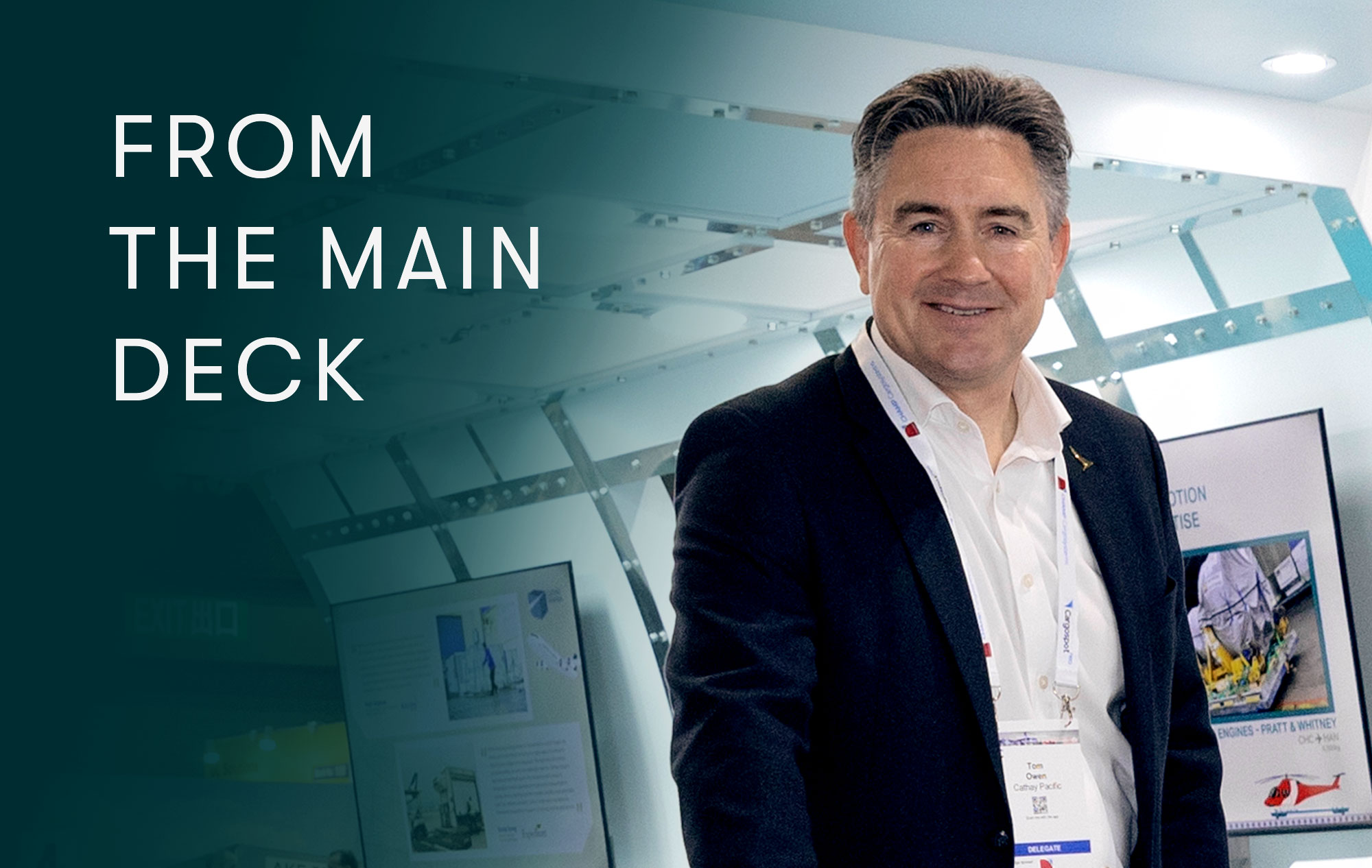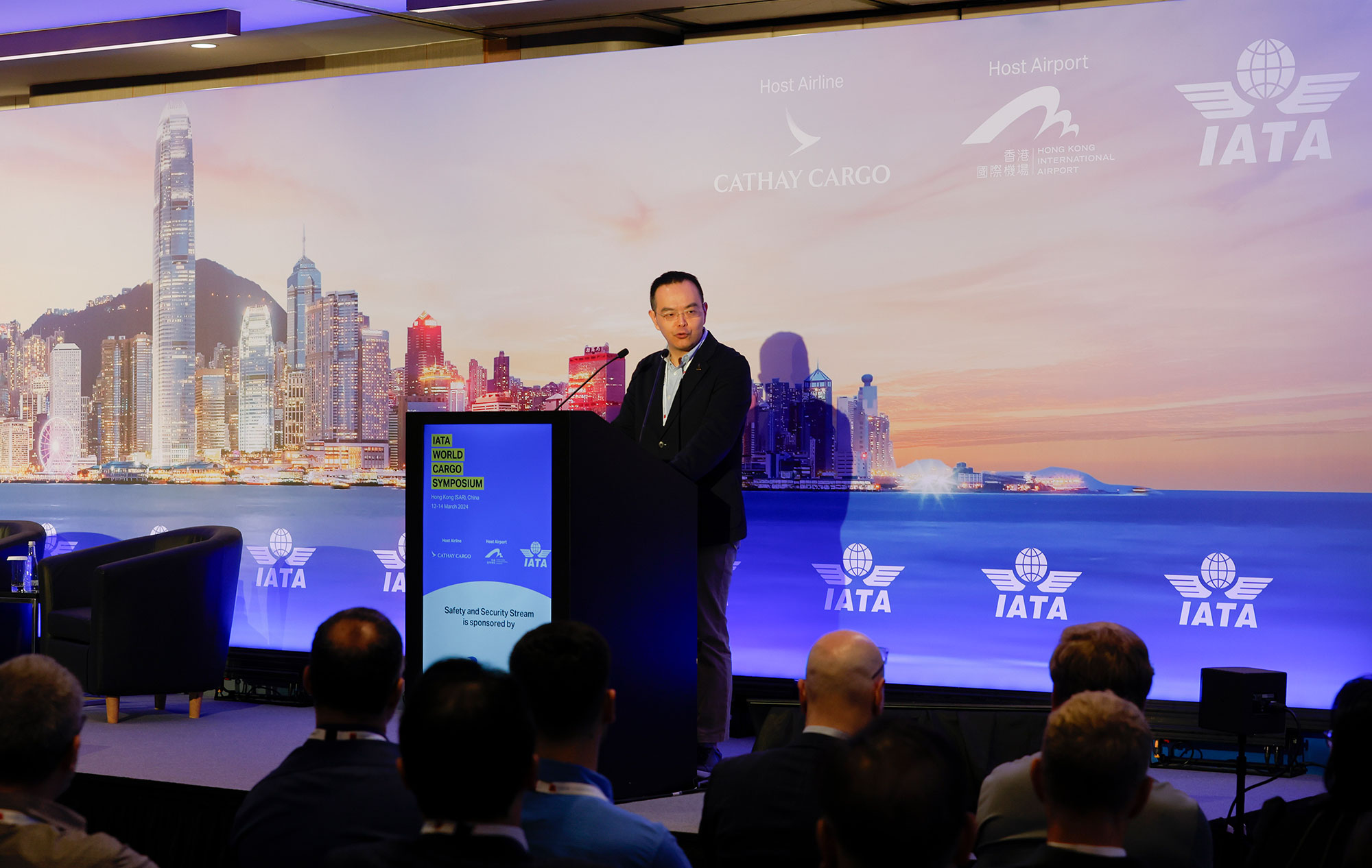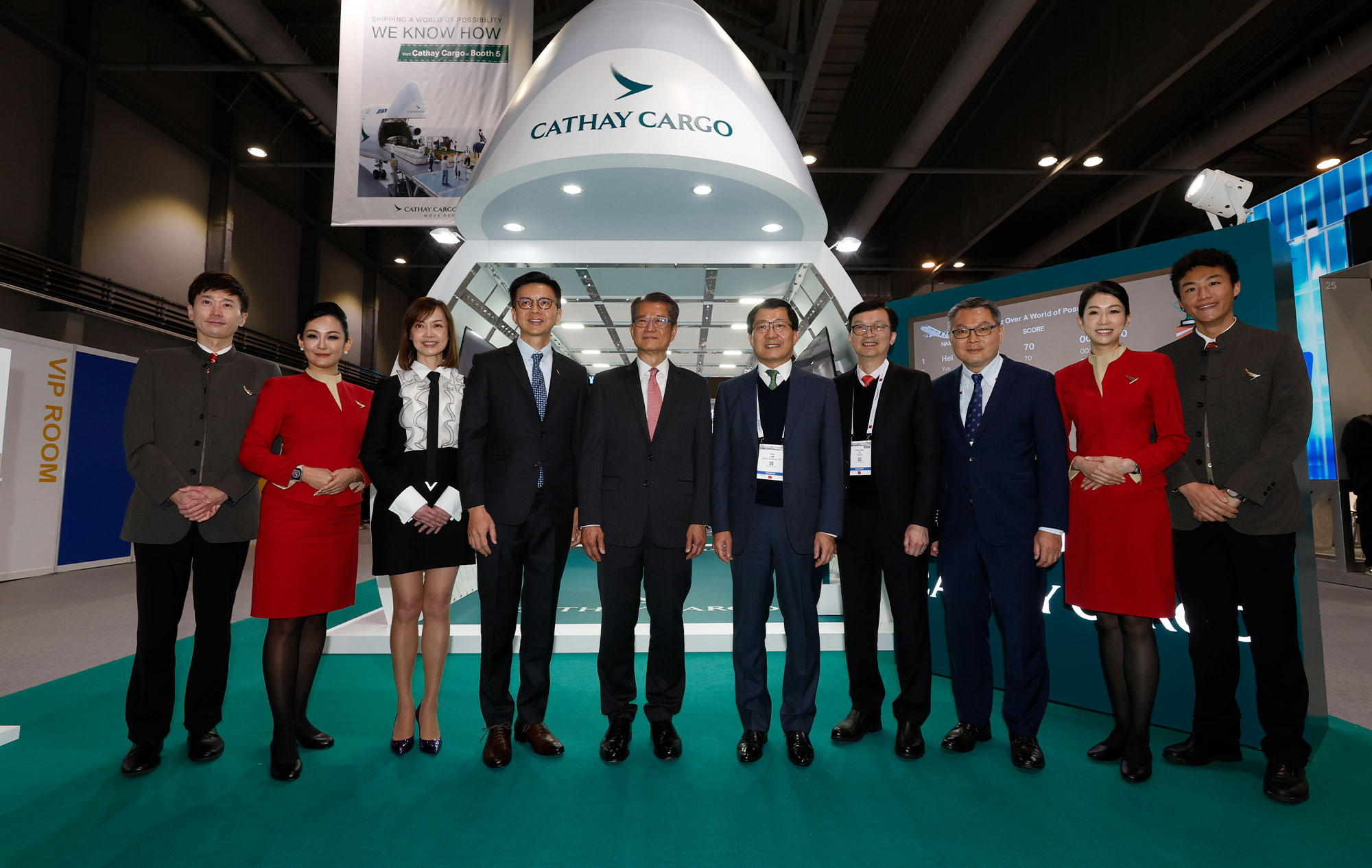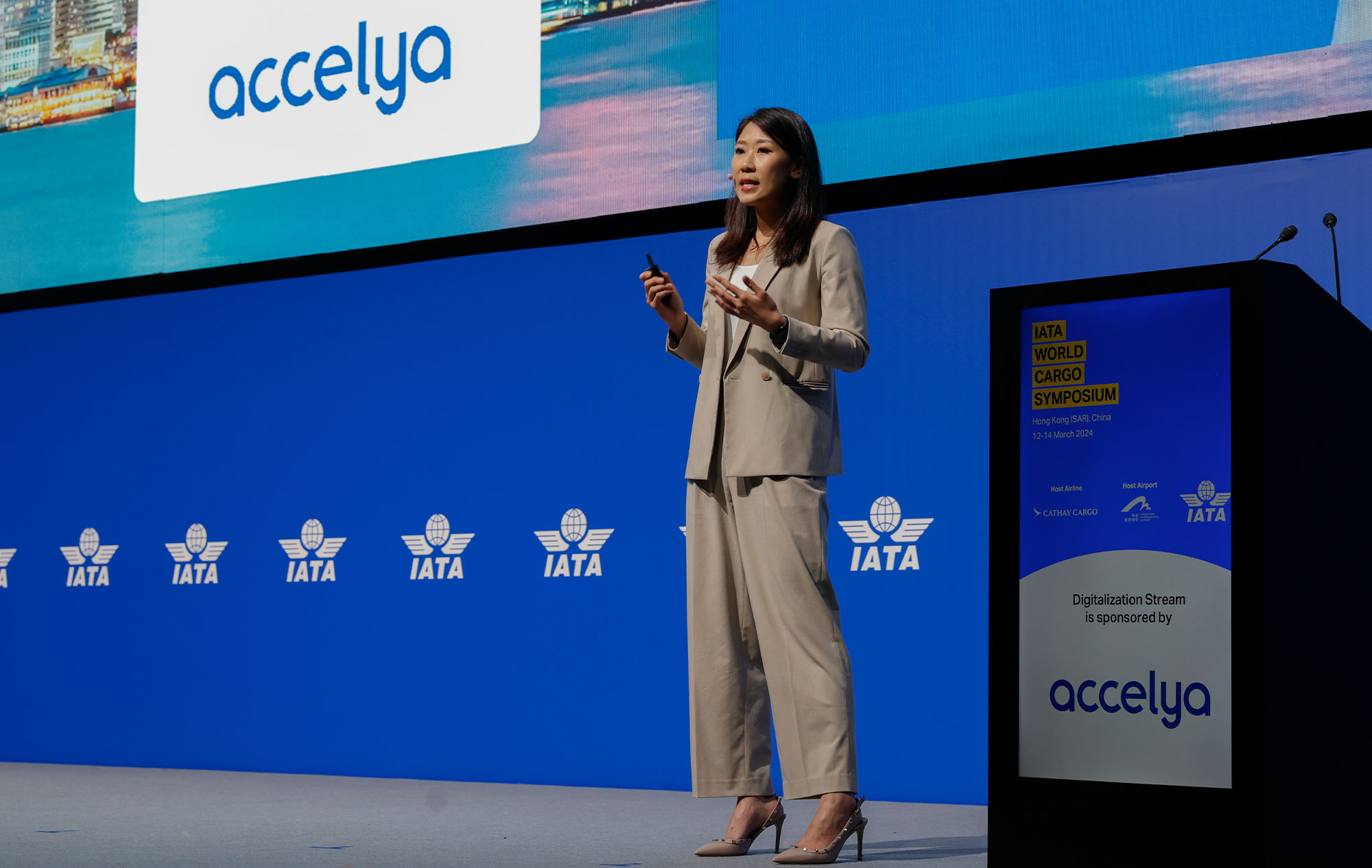Taking cargo from the Greater Bay Area (GBA) to Hong Kong International Airport (HKIA) by boat may seem counter-intuitive – the fastest transport mode meets the slowest – but in adversity, it has already proven its worth.
During the fifth wave of COVID-19 in Hong Kong earlier this year, public health measures included restrictions on cross-border traffic, which greatly limited the number of trucks entering the city. These trucks are vital to keeping shops and markets in Hong Kong stocked with fresh food, among other essentials.
With trucks concentrating on delivering necessaries to Hong Kong, there were fewer available to deliver cargo to the airport. So some enterprising agents diverted goods onto shipping containers, for transfer to boats working their way down the Pearl River Delta to Hong Kong’s shipping ports, and then for transfer onward to the airport.
This is also a part of HKIA’s growth and development plan. This includes the third runway, the new terminal and the expanded SkyCity development, which will feature Hong Kong’s largest integrated retail, entertainment and dining complex. But from a cargo perspective, one of the most significant developments is some way away from the airport – about six hours away by boat in Dongguan to the north of Shenzhen.

There, the Airport Authority (AA) is establishing the HKIA Logistics Park, which will offer an upstream but airside intermodal cargo-handling facility. When complete and fully equipped, this sea route will offer customs clearance, security screening, palletisation and cargo acceptance, enabling exports from the GBA to be carried straight to the restricted area of HKIA by sea – and then from there straight to aircraft or the cargo terminal. The aim, as the AA says, is to create ‘a brand new mode of cargo business, increase cargo-handling volumes at HKIA, and to serve as a growth engine for the industry’.
In spring as the trucking embargo hit hard, the pilot programme – currently operating from a temporary site in Dongguan – helped to keep some cargo coming in to HKIA for export. For now, these twice weekly sailings (which will increase in frequency over time) are landed at the quieter western end of the airport, but as SkyCity develops, there will be a permanent pier closer to the main airport infrastructure at the eastern end.
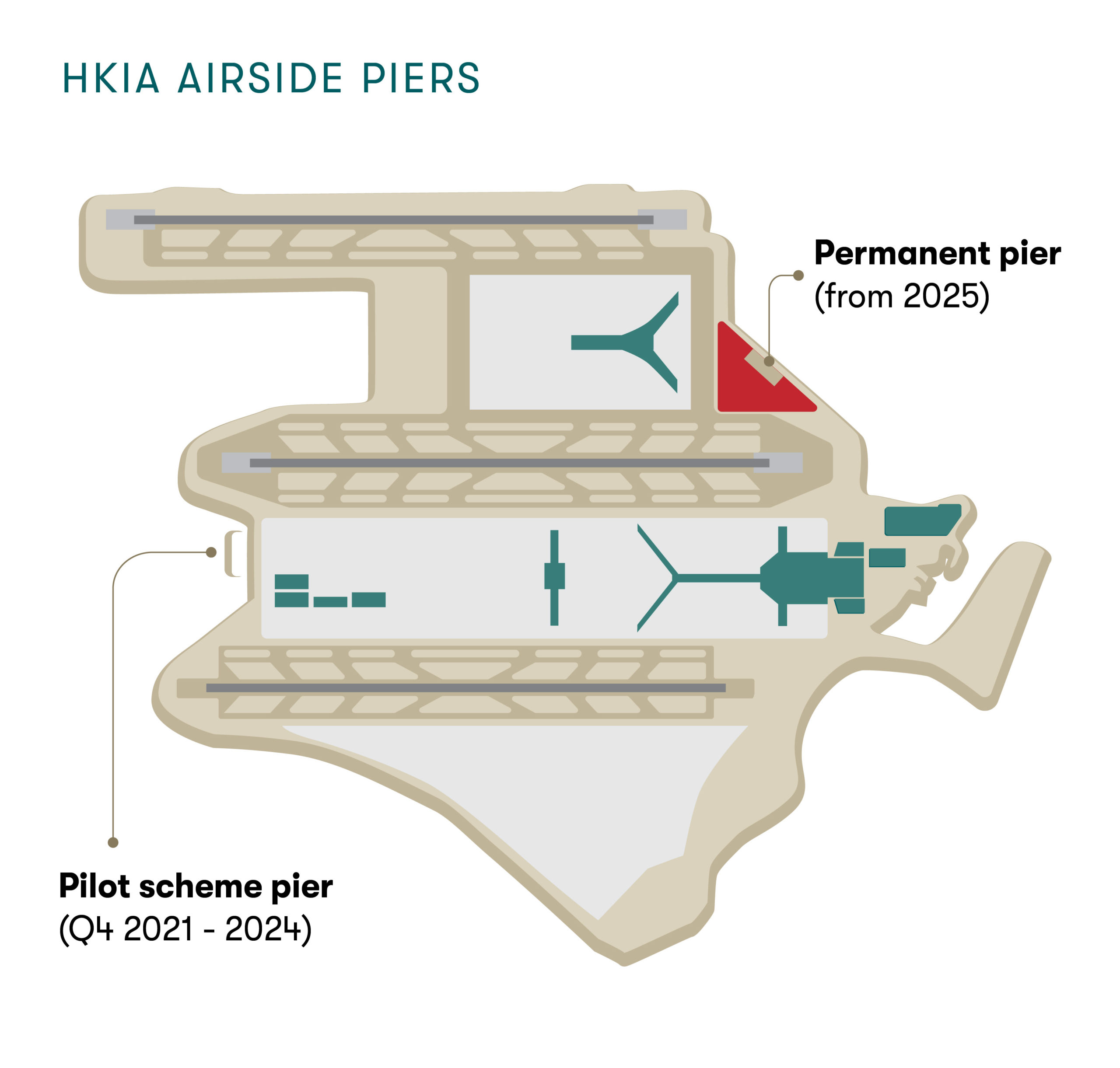
As this is a pilot scheme, the cargo for now needs to be taken to the cargo terminals at HKIA to be broken down, scanned and go through customs clearance before it can be loaded on aircraft. In the absence of trucking, it essentially enabled some cargo to get through.
The aim is to enable a full launch of the export facility from September that will be compliant with Hong Kong’s air cargo security regulations. And while the pilot scheme has focused on exports, the process of using the Logistics Park will be reversible and able to handle imports too.

So how does it work at a practical level? The boats are the small, converted freighters that can be seen carrying shipping containers between ports around Hong Kong’s waters. They have been converted to carry bespoke load devices that can be secured to the hull to limit movement, and these devices can carry built-up pallets and ULDs so that shipments can be slipped straight on to airport dollies.
‘The boats offer the equivalent of 32 main deck positions, or 64 AKEs,’ says May Chung, Cargo Sales Manager – GBA at Cathay Pacific Cargo. ‘That’s nearly equivalent to a full freighter.’ But rather than crossing the skies at 500mph or so, the boats stick to a sedate eight knots, making the six-hour journey not that much slower than trucking, even with the Hong Kong–Zhuhai–Macao Bridge. ‘The service will be supplementary to the trucks from the area around Dongguan,’ adds Chung.
For now, trucks will continue to carry cargo, particularly that which requires special handling, with the river service carrying only general cargo, much of which may well end up being e-commerce. ‘Dongguan is renowned for its number of e-commerce dealers,’ says Chung. ‘But whatever they are shipping we are keen for our customers to try this new mode, and we look forward to the opportunities to get cargo to and from the southwest region of the GBA.’
Meet May Chung, Cargo Sales Manager – GBA

How long have you worked at Cathay Pacific Cargo?
I joined Cathay Pacific in February this year, just after Chinese New Year. But because of the fifth wave, the office closed the day after I joined. From then until 24 April, I had only been in the office three times! And with the travel restrictions, I have yet to go to the GBA.
What were you doing before that?
I joined Cathay from Air France–KLM, where I worked as a Cargo Sales Manager. I was based in the Hong Kong office, but I also looked after Guangzhou, Xiamen and more recently Taipei. I was with Air France–KLM for 16 years, starting as a Customer Service Officer.
What will you be focusing on?
The GDP in this part of the southern Chinese Mainland is huge and growing. I will be focusing on developing business for cargo that needs special handling using our products such as Fresh LIFT, particularly for imports, because people there are keen to purchase premium products. If we can enhance our product mix and demonstrate the effectiveness of our added-value services, that will enhance our revenues.
In terms of exports, the GBA has the highest concentration of Fortune 500 companies in the country, including some of the IT giants and e-commerce players. The GBA is probably the biggest e-commerce hub in the Chinese Mainland, and we are devoted to increasing our share of this market.
How big is your team?
There are five of us. I am based in Hong Kong at the moment, but we have two existing members of the Commercial team in Guangzhou, and we will have a new team member joining shortly. I report into Frank Yau, Head of Cargo Sales Hong Kong and GBA.
What do you do outside of work?
I live in the relatively remote area of Sai Kung. I find the city in and around Kowloon too congested for me, and so I’m out in the country by the sea, and there I do a lot of hiking and sailing in my free time.





